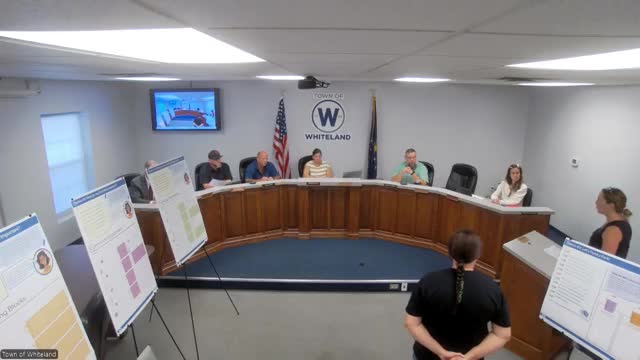Whiteland parks master-plan committee presents goals, funding scenarios and public workshop stations
October 02, 2025 | Whiteland Town, Johnson County, Indiana
This article was created by AI summarizing key points discussed. AI makes mistakes, so for full details and context, please refer to the video of the full meeting. Please report any errors so we can fix them. Report an error »

The Whiteland Parks and Recreation Board’s master plan committee presented draft goals, strategies and funding ideas and held an informal public workshop during the meeting to gather resident priorities and site input, staff member Maria said.
“At our first master plan committee meeting, what we looked at was setting some of the goals. Those were informed by the parks board initial survey that we asked for back in, I believe, it was March,” Maria told the board. She said the committee has had two meetings in total and used public-survey feedback and committee discussion to refine goals, identify strategies and draft action steps.
Maria described the evening’s format as an informal public meeting with four stations where residents could prioritize goals and strategies, review funding approaches and see cost estimates: “we'll be going over, with the public the goals and strategies of the plan, as well as some funding and budgeting ideas as to what could happen and action stop sizing.” The committee provided a station that compared approximate costs for different park types, including “a landmark park for thinking 3 to 5,000,000, aquatic park versus a neighborhood park versus multi use trails so that we understand what we're getting for this money,” Maria said.
Board members and residents discussed likely locations and connections for future improvements. Staff and commenters suggested using rights-of-way in the Park Forest neighborhood to add trails or sidewalks and discussed a potential trail easement near the sanitary lift station by Joseph Lane to improve connectivity toward Briar Creek. Residents raised concerns about parking at regional sports fields, trail safety and neighborhood impacts.
One resident described a policing incident at a park and asked whether staff would follow up; board members said they would address specific operational or safety concerns with the appropriate departments. Residents also suggested fundraising ideas and revenue-generating amenities for a future “landmark” park, such as features that could increase adjacent property values and produce ongoing program revenue.
The committee did not take a formal vote on park design or funding; the session was conducted as an informational, public-engagement workshop. Committee members said the next steps include refining action steps and incorporating public input into the draft master plan.
The board invited attendees to sign in and to move among the four stations to place dots and post-it notes indicating priorities and preferred locations for future improvements.
“At our first master plan committee meeting, what we looked at was setting some of the goals. Those were informed by the parks board initial survey that we asked for back in, I believe, it was March,” Maria told the board. She said the committee has had two meetings in total and used public-survey feedback and committee discussion to refine goals, identify strategies and draft action steps.
Maria described the evening’s format as an informal public meeting with four stations where residents could prioritize goals and strategies, review funding approaches and see cost estimates: “we'll be going over, with the public the goals and strategies of the plan, as well as some funding and budgeting ideas as to what could happen and action stop sizing.” The committee provided a station that compared approximate costs for different park types, including “a landmark park for thinking 3 to 5,000,000, aquatic park versus a neighborhood park versus multi use trails so that we understand what we're getting for this money,” Maria said.
Board members and residents discussed likely locations and connections for future improvements. Staff and commenters suggested using rights-of-way in the Park Forest neighborhood to add trails or sidewalks and discussed a potential trail easement near the sanitary lift station by Joseph Lane to improve connectivity toward Briar Creek. Residents raised concerns about parking at regional sports fields, trail safety and neighborhood impacts.
One resident described a policing incident at a park and asked whether staff would follow up; board members said they would address specific operational or safety concerns with the appropriate departments. Residents also suggested fundraising ideas and revenue-generating amenities for a future “landmark” park, such as features that could increase adjacent property values and produce ongoing program revenue.
The committee did not take a formal vote on park design or funding; the session was conducted as an informational, public-engagement workshop. Committee members said the next steps include refining action steps and incorporating public input into the draft master plan.
The board invited attendees to sign in and to move among the four stations to place dots and post-it notes indicating priorities and preferred locations for future improvements.
View full meeting
This article is based on a recent meeting—watch the full video and explore the complete transcript for deeper insights into the discussion.
View full meeting
